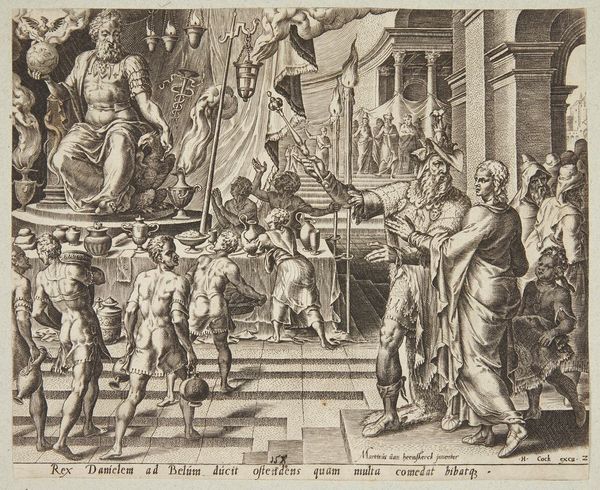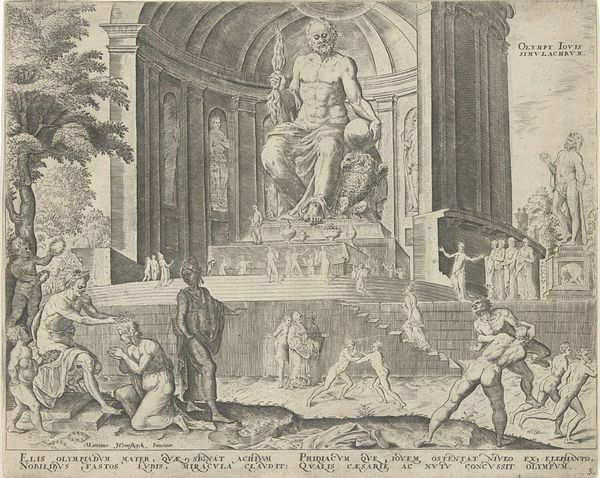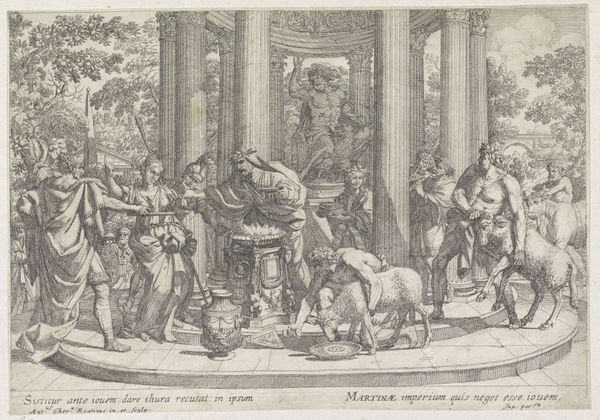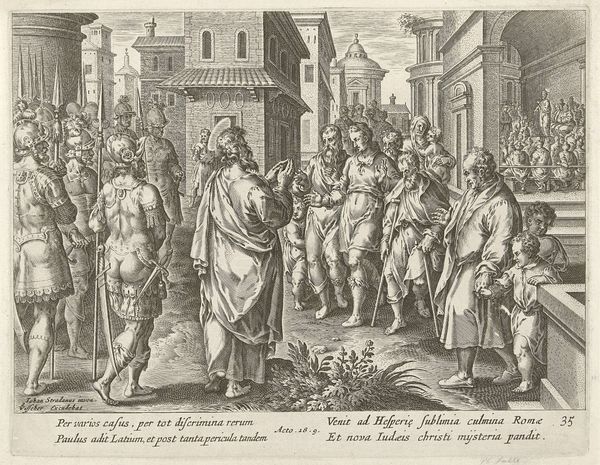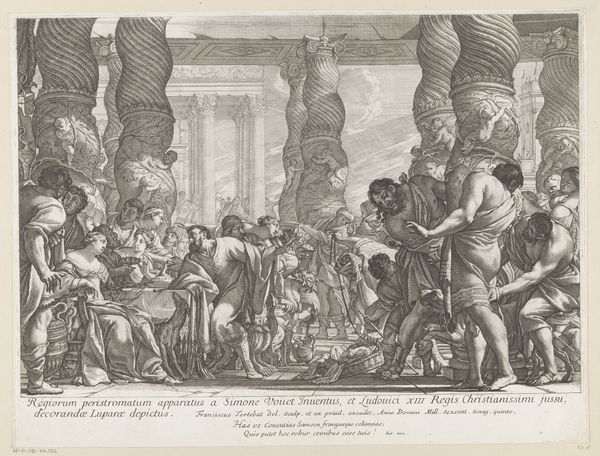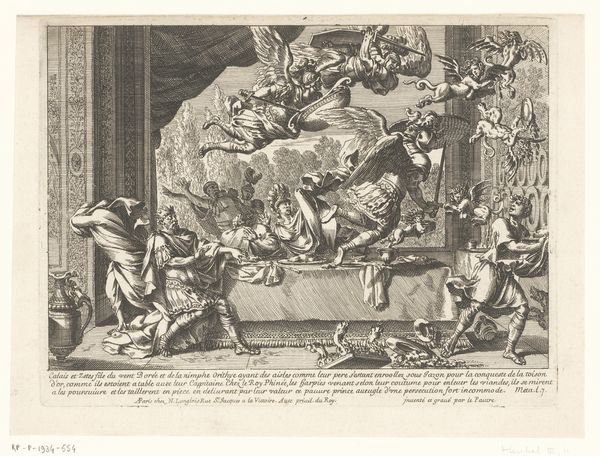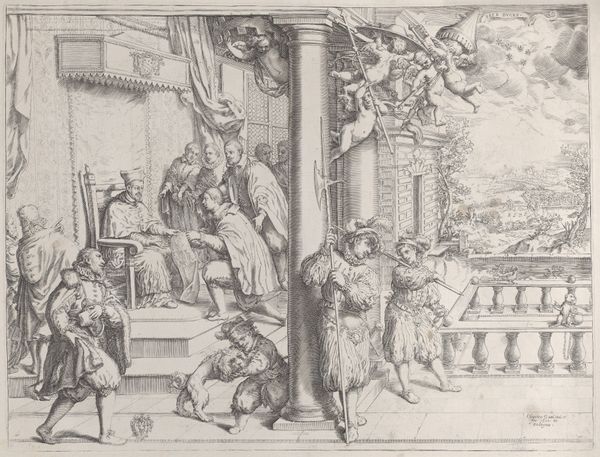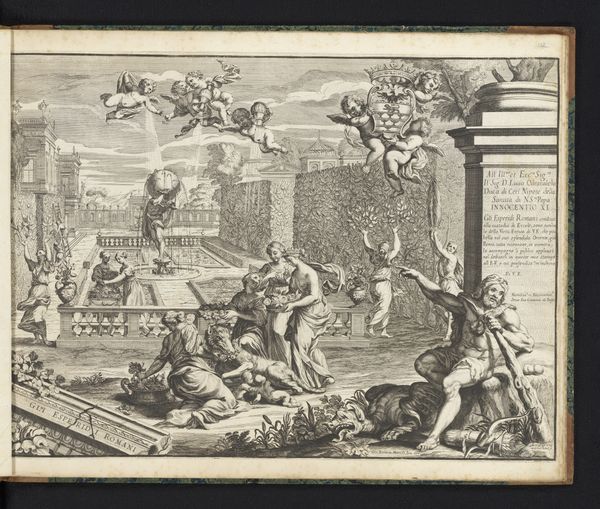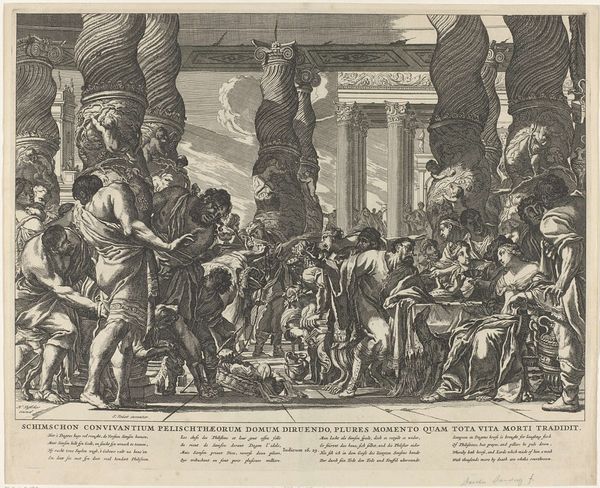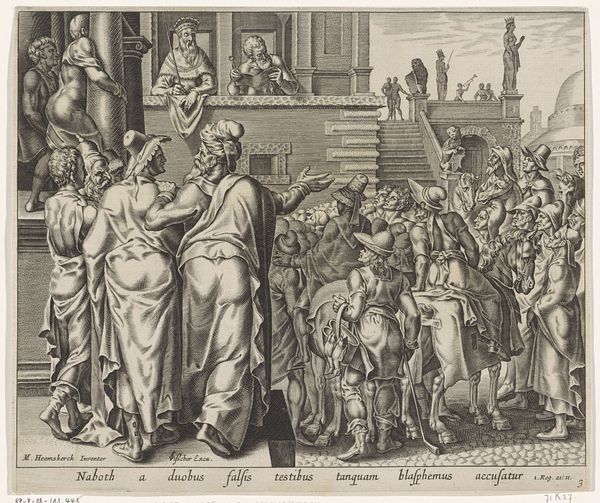
print, engraving
#
allegory
#
baroque
# print
#
figuration
#
history-painting
#
engraving
Dimensions: 210 mm (height) x 249 mm (width) (bladmaal)
Editor: So this is Simon de Pas's "The Statue of Jupiter," created in 1614. It’s a print, an engraving, and it’s just packed with figures and symbols. I find it kind of overwhelming, honestly. What do you see in this piece? Curator: It’s fascinating how De Pas uses the visual language of antiquity to assert cultural authority. Think about Jupiter, a figure synonymous with power, law, and order in the Roman pantheon. Here, he's not merely a god, but a simulacrum, a deliberate reconstruction. The artist reminds us that cultural memory and authority is rooted in what we choose to preserve, to represent, and how. What do you make of the contemporary figures interwoven within this idealized, ancient world? Editor: I noticed them too, sort of mingled among all the cherubs and gods, almost like they are being legitimized by this backdrop of history? Curator: Precisely! It’s a strategic deployment of allegory and historical painting. By positioning these contemporary figures within this theatrical tableau of classical antiquity, the artist aims to connect them with that powerful historical narrative, asserting their own place within that continuing legacy of authority. The act of placing the laurel wreath also signifies victory, success. Notice the steps; ascending towards divinity. Editor: I see, almost like a staged memory or historical branding campaign, if you will. So, the choice of imagery, from Jupiter to the athletic games, wasn't just decorative but also functional? Curator: Absolutely. Consider how baroque art operates on spectacle and persuasive rhetoric. This engraving participates in the construction of history, visually and psychologically linking power in the present with the grand narrative of the past. What an amazing commentary on the nature of legacy. Editor: I hadn't considered how active a role images can play in building history. Thanks. Curator: My pleasure. Seeing art through the lens of cultural memory brings new perspectives on their meaning and historical function.
Comments
No comments
Be the first to comment and join the conversation on the ultimate creative platform.

